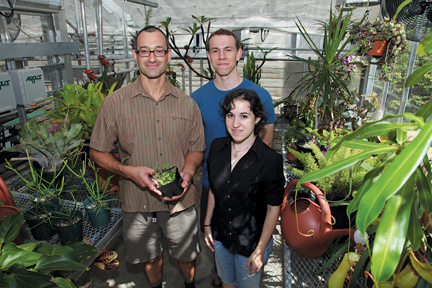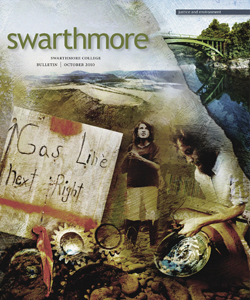Elan Silverblatt-Buser ’12

Junior biology majors Julia Cooper and Elan Silverblatt-Buser (center) worked in the lab of Assistant Professor Nick Kaplinsky, mapping genes in a plant they tended in the Martin greenhouse. “There were moments when I thought to myself, ‘Ah ha! I’m the first person in the world to see this!’” says Silverblatt-Buser.
Elan Silverblatt-Buser '12, an honors biology major, worked with Assistant Professor of Biology Nick Kaplinsky to research the effects of a non-canonical small heat shock protein (sHSP) on Arabidopsis, a plant related to cabbage and mustard.
I first got to know Professor Kaplinsky when I took Biology 1. When I spoke to him about his research, I became very interested in working with him and found myself in his lab doing an independent research project. He then encouraged me to apply for one of the Summer Undergraduate Research Fellowships from the American Society of Plant Biologists. With this fellowship and funding that Professor Kaplinsky received from the National Institutes of Health, I was able to spend the summer conducting a series of experiments in his lab.
There were two major aspects to my lab life: the “wet work” (lab work) and the “dirty work” (greenhouse work). I spent time in the lab designing primers, analyzing the products of polymerase chain reactions, doing DNA preparations, and setting up other experiments in order to map an unknown gene in Arabidopsis. In the greenhouse, I mostly tried to keep the plants alive to use in my experiments.
I got to experience what life is like as a research scientist. The lab work was intense, rewarding, and stimulating. Balancing all of the intricacies of mapping a gene was challenging and sometimes tedious but also extremely gratifying. There were moments when I thought to myself, “Aha! I'm the first person in the world to see this” or “I’m the first to identify this gene.”
 Email This Page
Email This Page